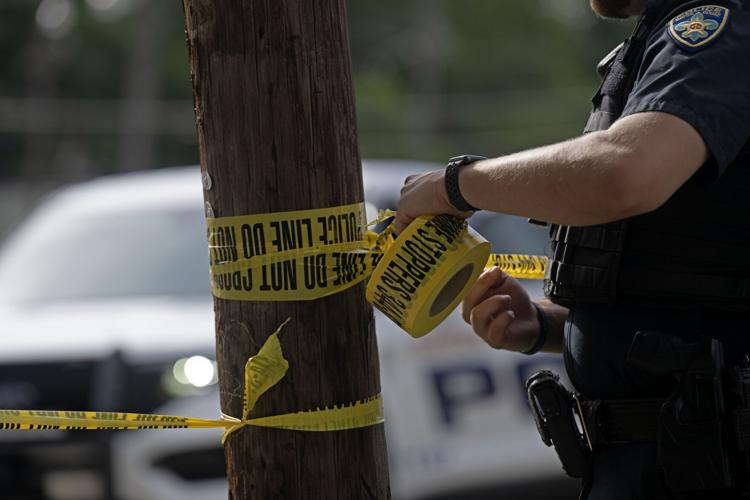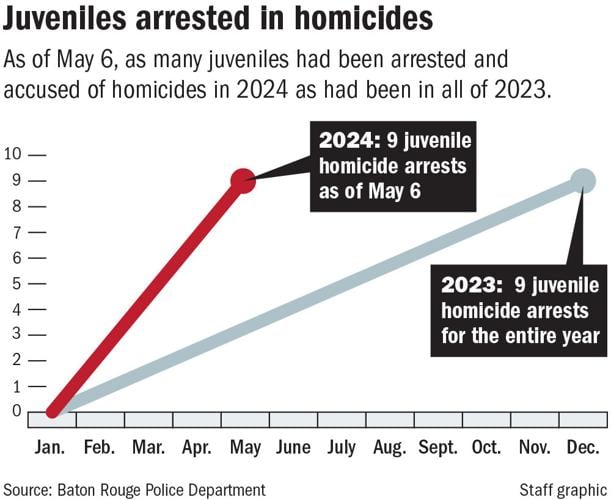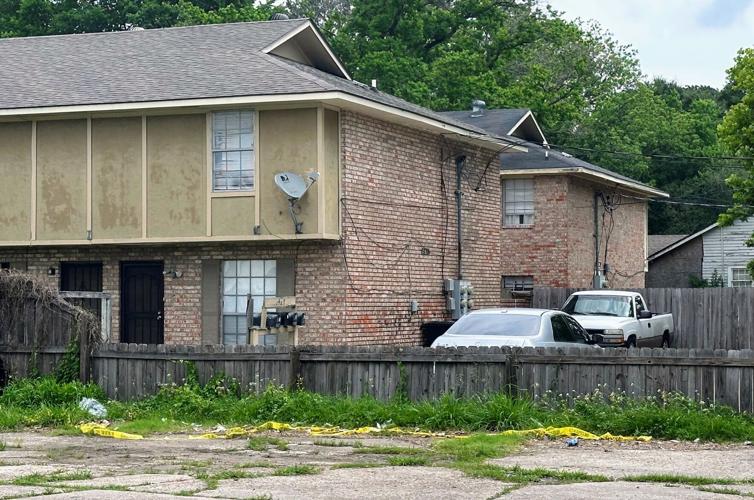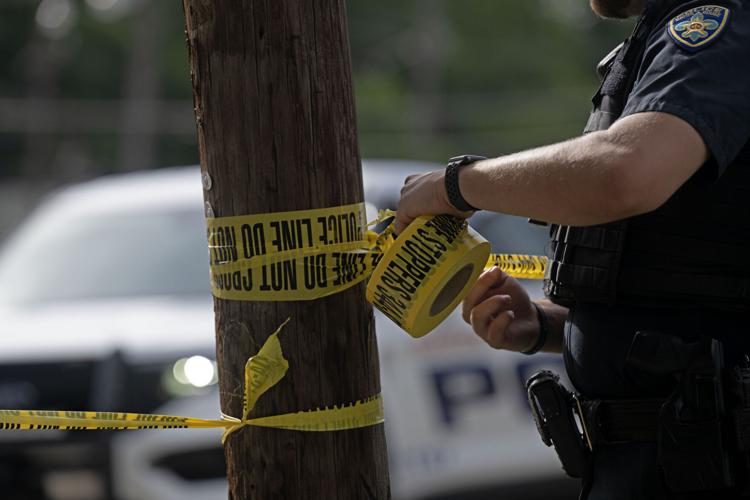A 14-year-old gunned down his uncle during an argument Monday at an apartment on Clayton Drive, Baton Rouge police said, the latest in a surge of youth arrests on homicide counts this year.
The teen accused of killing Sherderick Jones, 46, was the ninth juvenile arrested for a homicide in 2024 so far, according to Baton Rouge Police Department data. That matches the number of similar arrests for all of 2023.
"We're seeing a drastic trend of suspects getting younger and younger committing these crimes," Baton Rouge Police Chief Thomas Morse said at a public appearance last week.
By the beginning of May, 291 juveniles had been arrested for felonies in Baton Rouge since the beginning of the year, equating to more than two felony arrests each day, according to BRPD data.
Baton Rouge has seen a significant uptick in homicides across the board in 2024. Data shows nearly double the number of total homicides in the first quarter of the year compared to last, roughly on the same pace as the city's deadliest year, 2021.
But the increase among the juvenile population particularly stands out.
In March, a teenager allegedly shot and killed Jashawn Neal, 23, who was holding a 1-year-old baby girl outside his apartment. The child was also shot and reportedly lost an eye but survived.
Authorities said this increase in violence among juveniles can be attributed to factors such as absence from structures like school and an increased accessibility to deadlier weapons.
"I do believe that we're seeing more and more kids left unsupervised, and becoming truant and dropping out (of school)," District Attorney Hillar Moore said. "In addition to that, (we're seeing) easier access to very high-powered weapons, whether it's semi-automatic, or turned automatic by machine gun type of devices. We have surely seen an increase in that."
A study conducted by several local agencies like the Department of Human Services and the local school board is set to publish later this month, which Moore said will shed more light onto this population of juveniles committing violent crime at an increased rate.
"I would bet that … you're going to see that an overwhelming number of juveniles involved in violent crime and murder are historically and habitually truant and are dropped out of school," Moore said. "It's very obvious to us and all of law enforcement."
A disconnect between institutions such as schools and others for this group also rings true for Edward Shihadeh, a criminologist and LSU professor of sociology, who says the teens committing these crimes lack community.
"They're teens or very young adults who are institutionally detached from everything," he said.
Shihadeh calls these kinds of youth "floaters."
"Floaters are people who are not in school, typically … and are not employed. They are not looking for work. They're not even in the labor force. They're not in the military. They don't belong to any community organizations," he said.
The professor said institutions like school or jobs are what commonly keep people out of trouble, so the solution to lowering the number of youth committing violent crimes is to put greater effort into strengthening their bonds to society.
"We need to identify who the floaters are in Baton Rouge," Shihadeh said. "We find a way to reel them back in, which maybe involves 100 Black Men and involves Big Brothers, basically reconnecting them to social institutions, getting them a job, getting them a place to live and getting them in a stable household."
Moore said fixing this problem is not going to happen overnight, but he agrees the solution lies in solving the disconnect between this youth population in Baton Rouge and the structures that will keep them out of trouble.
"If you address that gap, which is going to take you a long time, you can significantly impact violence and homicides," Moore said.
Staff writer Gabby Jimenez contributed to this story.




